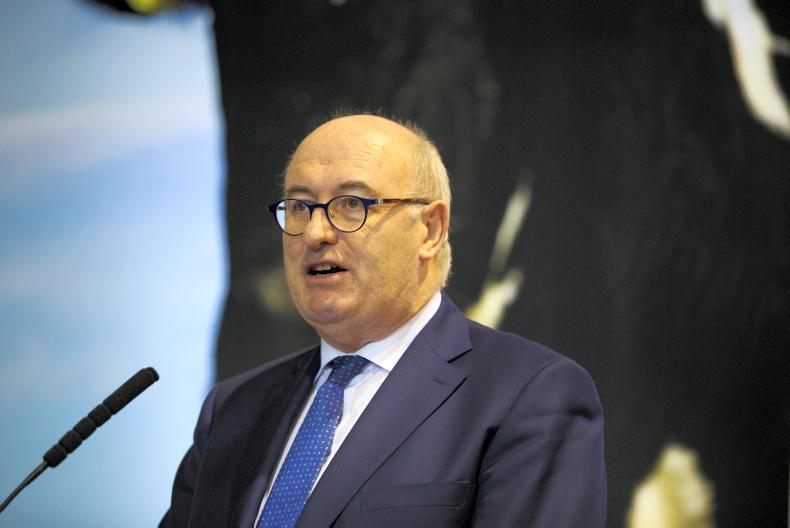The first clear shape of how the next Common Agricultural Policy (CAP) will look was launched in Brussels on Wednesday. The document, The Future of Food and Farming, was launched by European Commissioner for Agriculture Phil Hogan and gives a broad view of how the next CAP will look.
None of the proposals are set in stone, but they will give a vision of where the next CAP will go.
The next CAP, due to start after 2020, is set against a backdrop of never-seen-before political, economic and climate uncertainty for the agriculture sector.
Each sector in Europe must put forward its case to receive the largest slice of the overall EU budget.
The UK’s decision to leave the EU in 2019 will undoubtedly leave a multi-billion euro hole in the overall EU, and by extension, CAP budget. The UK contributed approximately €10bn to the €60bn CAP budget and, without a process to make up the shortfall, payments to all farmers are likely to be cut across the board. The cut is likely to be in the region of 5%.
There are also greater demands from other sources for money from the overall EU budget. The budget, which is likely to be set in May 2018, will have to deal effectively with the migrant crisis. This is a situation that the last regime did not have to deal with and it will be a significant draw on the budget.
Finally, there are the issues of climate change and tackling greenhouse gas emissions. With climate change being an undeniable fact, agriculture will have to play a great role in dealing with emissions.
It is expected that the next CAP will have a greater emphasis on the role farmers and the wider agriculture sector must play in meeting our climate obligations.
All of this adds up to being a fundamentally different CAP to the ones that have preceded it.
Here we outline the key measures contained within Commissioner Hogan’s view of the next CAP.
Read more
Cap 2020: active farmers actively farming
CAP 2020: cutting down on red tape
CAP 2020: new policy hinges on climate change
CAP 2020: Tackling income volatility
CAP 2020: New entrants and farm transfers
CAP 2020: farm investment and knowledge transfer
The first clear shape of how the next Common Agricultural Policy (CAP) will look was launched in Brussels on Wednesday. The document, The Future of Food and Farming, was launched by European Commissioner for Agriculture Phil Hogan and gives a broad view of how the next CAP will look.
None of the proposals are set in stone, but they will give a vision of where the next CAP will go.
The next CAP, due to start after 2020, is set against a backdrop of never-seen-before political, economic and climate uncertainty for the agriculture sector.
Each sector in Europe must put forward its case to receive the largest slice of the overall EU budget.
The UK’s decision to leave the EU in 2019 will undoubtedly leave a multi-billion euro hole in the overall EU, and by extension, CAP budget. The UK contributed approximately €10bn to the €60bn CAP budget and, without a process to make up the shortfall, payments to all farmers are likely to be cut across the board. The cut is likely to be in the region of 5%.
There are also greater demands from other sources for money from the overall EU budget. The budget, which is likely to be set in May 2018, will have to deal effectively with the migrant crisis. This is a situation that the last regime did not have to deal with and it will be a significant draw on the budget.
Finally, there are the issues of climate change and tackling greenhouse gas emissions. With climate change being an undeniable fact, agriculture will have to play a great role in dealing with emissions.
It is expected that the next CAP will have a greater emphasis on the role farmers and the wider agriculture sector must play in meeting our climate obligations.
All of this adds up to being a fundamentally different CAP to the ones that have preceded it.
Here we outline the key measures contained within Commissioner Hogan’s view of the next CAP.
Read more
Cap 2020: active farmers actively farming
CAP 2020: cutting down on red tape
CAP 2020: new policy hinges on climate change
CAP 2020: Tackling income volatility
CAP 2020: New entrants and farm transfers
CAP 2020: farm investment and knowledge transfer






 This is a subscriber-only article
This is a subscriber-only article









SHARING OPTIONS: